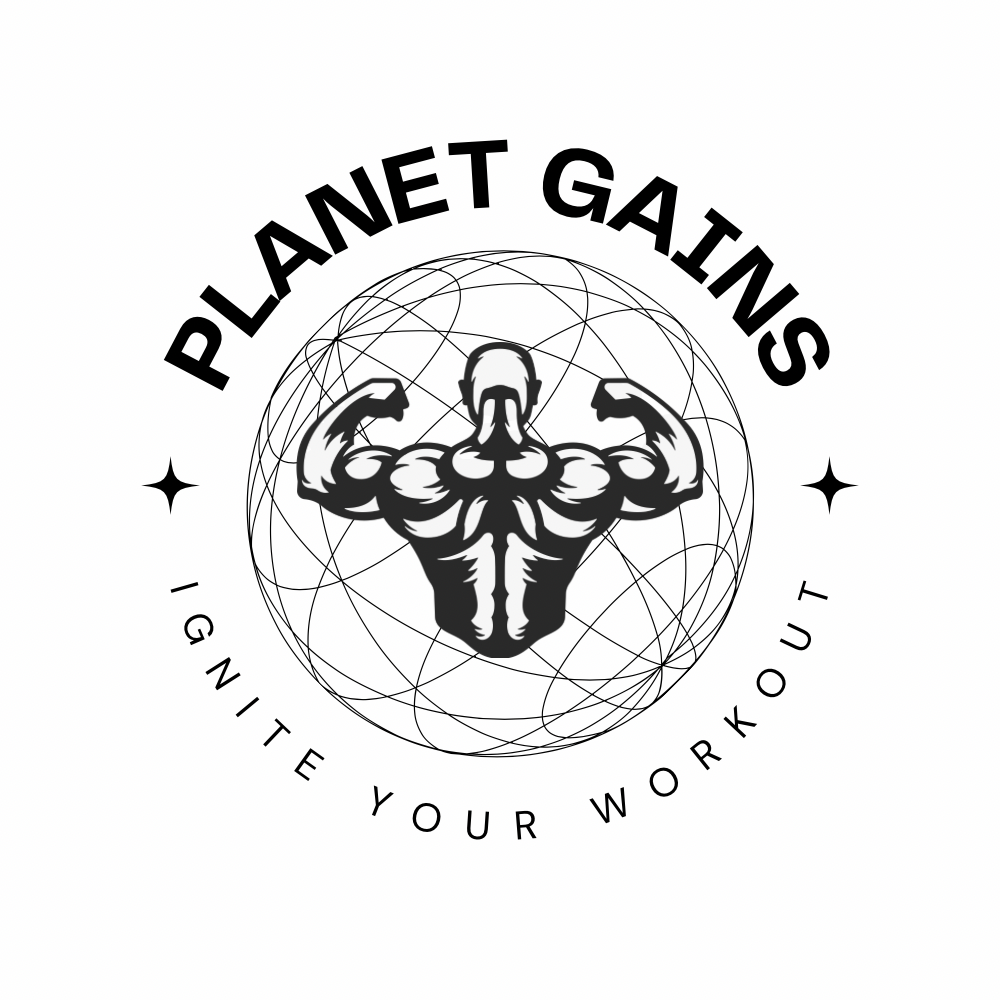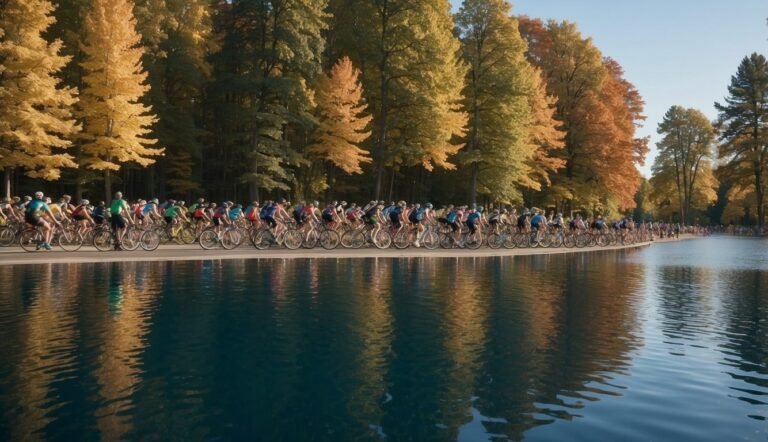📦 FREE Shipping
What is an Ironman Run: The Ultimate Challenge in 2024!

I always find myself in awe when discussing an Ironman triathlon—the ultimate endurance event that has captured the imaginations of athletes worldwide. You might ask: What is an Ironman Run?
Imagine embarking on a journey that tests the limits of human capability: a 2.4-mile swim in open water, a grueling 112-mile bike ride, and a marathon run of 26.2 miles, all to be completed sequentially and without a break. This is not just a race; it’s a testament to the tenacity of the human spirit.
Participating in an Ironman is like joining an elite group of athletes who have pushed their bodies and minds to accomplish something extraordinary. The event starts with the swim, which sets the tone for the day; it’s a battle against not just the distance, but often the elements themselves. Transitioning onto the bike, competitors then face the challenge of pacing themselves over a course that can include steep climbs and swift descents. This leads to the final leg, the run, where perseverance and endurance come to the forefront as I near the finish line.
Ironman Triathlon Origins
I’m thrilled to walk you through the fascinating genesis of one of the most grueling endurance events on the planet—the Ironman Triathlon. From a friendly debate to a defining athletic competition, let’s dive into its rich history and the visionary people who turned a bold idea into an international phenomenon.
Historical Development
As a triathlon enthusiast, I’ve always been captivated by the event’s historical development. It all began in 1977 when a heated debate among the Mid-Pacific Road Runners and Waikiki Swim Club members about the toughest endurance sport sparked the creation of the Ironman. They proposed a race that would combine the demanding distances of Hawaii’s three long-distance endurance events: the Waikiki Roughwater Swim, the Around-Oahu Bike Race, and the Honolulu Marathon.
The following year, on February 18, the first-ever Hawaiian Iron Man Triathlon was held. I marvel at how they didn’t just swim a little, bike a bit, or run a standard marathon. They went all-in: a 2.4-mile swim, a 112-mile bike ride, and capped it off with a full 26.2-mile marathon run.
Key Figures and Events
When talking about key figures, Judy and John Collins stand out as the pioneering spirits I admire. This power couple first experienced the joy of triathlons at the Mission Bay Triathlon in San Diego on September 25, 1974, which lit a spark in them. Their passion carried over when they moved to Hawaii, ultimately leading them to create the first Ironman event.
It’s fascinating for me to reflect on the evolution that ensued. Valerie Silk, taking over the race in 1978, was instrumental in shaping the Ironman into a world-class sporting event. Under her leadership, the race saw exponential growth in participation and popularity, setting the stage for the global series we know today. Silk’s innovative thinking paved the way for what has become a bucket list item for athletes worldwide, further solidifying the Ironman Triathlon’s prominent place in the history of competitive sports.

Disciplines and Distances
In an Ironman triathlon, I am awestruck by the sheer challenge of conquering three rigorous disciplines, spanning a total of 140.6 enthralling miles—each segment testing the athletes’ endurance to the maximum.
Swim Segment
The Ironman swim is a thrilling 2.4-mile journey through open water. Starting off the triathlon, I plow through the water with precision and strength, embarking on the adrenaline-pumping endurance test.
Bike Segment
Once I emerge from the swim, the Ironman bike segment awaits, encompassing a grueling 112-mile ride. Pedaling over a century, I push my limits over hills and flats, strategizing to maintain stamina for the road ahead.
Run Segment
Completing the triathlon, I face the marathon run, a 26.2-mile stretch that brings the total Ironman distance to 140.6 miles. As I tackle each mile, I draw on every ounce of energy, laser-focused on crossing that finish line and solidifying my Ironman status.

Training and Preparation
Preparing for an Ironman triathlon, I ensure to adhere to a comprehensive training plan that gradually builds my endurance across all three disciplines of swimming, cycling, and running. Seeking advice from an experienced Ironman coach can significantly enhance my training quality and efficiency.
Swimming Training
I focus on honing my technique in the water and increasing endurance by incorporating interval swims and continuous, long-distance sets. My weekly schedule includes:
- Intervals: On Tuesdays and Thursdays, I perform sets of 100 to 400 meters at a race pace with short rest periods.
- Endurance Swims: Saturdays are reserved for longer swims that start at around 1500 meters and increase every week.
Cycling Training
Cycling constitutes the longest portion of the Ironman event. To prepare, I emphasize both volume and intensity in my cycling training:
- Long Rides: Once a week, usually on Sundays, my rides begin at two hours and extend by 30 minutes each week, peaking at around six hours.
- Speed Work: Intervals on Wednesdays range from 4 to 6 minutes of high-intensity bursts with equal recovery time.
Running Training
Post-cycling runs are crucial to mimic race conditions, so I include brick workouts in my routine:
- Brick Workouts: Following a long bike ride, I immediately transition to a run, starting with 15 minutes and building up to an hour.
- Long Runs: Thursdays are dedicated to a long, steady run, increasing from 5 miles up to 20 miles as training progresses.
Transition Planning
Efficient transitions can save precious time. I practice transitioning between disciplines:
- Swim to Bike (T1): I rehearse quick changes from my wetsuit to cycling gear, aiming to reduce seconds off this process.
- Bike to Run (T2): Post-cycling, I switch to my running shoes and gear, ensuring I am comfortable with the quick shift in activity.
Every workout is a step closer to that finish line, and with a solid plan, I’m prepared to meet the demands of Ironman triathlons head-on!
Global Ironman Events
I’ve always marveled at the sheer scale and global reach of Ironman triathlons. From the sunny coasts of Kona, Hawaii, to the historic landscapes of Nice, France, Ironman races are not just tests of endurance but also festivals that celebrate the human spirit across continents.
Coveted Races
Ironman World Championship in Kona, Hawaii: At the heart of Ironman’s global events is the annual World Championship held in Kona. The pinnacle of Ironman races, it attracts the world’s elite triathletes every October.
- Ironman Florida: Known for its flat course, Ironman Florida is a favorite for athletes looking to set personal records.
- Ironman Arizona: A late season race with a scenic, urban course through Tempe’s desert landscape.
These races are often qualifiers for Kona, reinforcing their prestige.
Iconic Ironman Locations
Throughout the world, several locales stand out for their unique challenges and scenic backdrops:
- Nice, France: A historic city offering a stunning Mediterranean swim, a demanding bike segment through the Alps, and a beautiful beachfront run.
- Challenge Roth (Germany): Not an Ironman-branded race but comparable in distance and difficulty, famous for its enthusiastic spectators and record-breaking opportunities.
- Ironman Cairns, Australia: Here, athletes are treated to a swim in the Coral Sea alongside the Great Barrier Reef.
- Kalmar, Sweden: Home to a striking course that includes a swim in the Baltic Sea, a bike ride over the Öland Bridge, and a run through Kalmar’s 17th-century city center.
Ironman competitions such as Thun, Switzerland, and Ironman Cozumel offer landscapes varying from alpine vistas to Caribbean beaches, creating vibrant, unforgettable experiences for participants and spectators alike.
Frequently Asked Questions about What is an Ironman Run?
What is an Ironman distance?
An Ironman distance includes a 2.4-mile swim, a 112-mile bike ride, and a 26.2-mile marathon run, completed in that order without a break. It’s one of the most challenging long-distance triathlon events.
How long does it take to complete an Ironman?
Completing an Ironman can take anywhere from 8 to 17 hours, depending on the athlete’s level of fitness, experience, and conditions on the day of the race. The cutoff time is typically 17 hours from the start.
Is 70.3 a real Ironman?
Yes, 70.3 refers to a Half Ironman, which totals 70.3 miles, comprising a 1.2-mile swim, a 56-mile bike ride, and a 13.1-mile run. It’s officially recognized as an Ironman event, though half the distance of a full Ironman.
Why is it called an Ironman run?
It’s called an Ironman run because the marathon run is the final segment of the Ironman triathlon. The term “Ironman” underscores the extreme endurance, strength, and determination required to complete one of the toughest one-day sporting events.
Do you now know the answer to your question: “What is an Ironman run”? Make sure to also read about CrossFit Track Workouts or Running Endurance Workouts.





